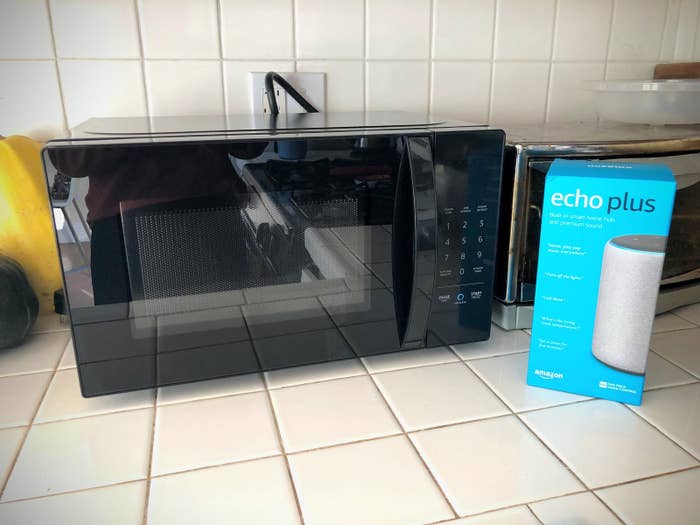
Amazon’s new “smart” microwave with Alexa is a microwave. It’s not magic.
Yes, you can use your voice instead of pressing buttons. But it doesn’t clean itself when your pasta explodes. It doesn’t have a quiet beep mode for when someone in your house is sleeping. It reheats food unevenly. It doesn’t open the door for you. It’s smart, but it's still a microwave.
“How lazy,” I thought, when Amazon first unveiled the device in September. Surely lifting a finger isn’t that arduous.
Initial reactions to the microwave when it debuted included “ridiculous,” “lazy,” and “just because you can, doesn’t mean you should” — opinions that aren’t wrong!
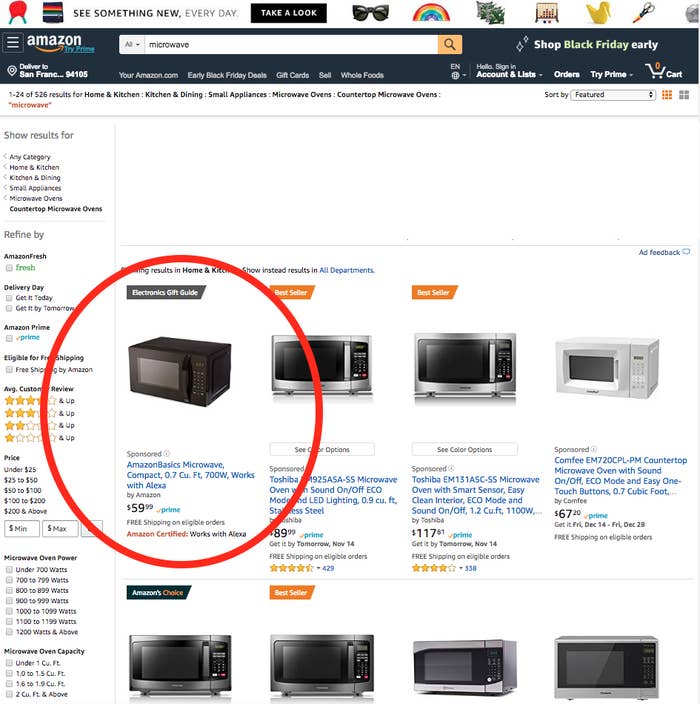
But Amazon is going to sell a gazillion of them, despite what those internet people had to say, and here’s why: 1) it costs $60, or about 20 lattes, which is a very reasonable price; 2) it is available with free, two-day shipping to Amazon’s over 100 million Prime members; 3) it is 0.7 cubic feet, the “most popular size of microwave” on the shopping giant’s site, according to Amazon devices vice president Charlie Tritschler, and, finally, 4) it is already #1 in Amazon’s own search results for “microwave” in the US, and it’s even specially badged with “Electronics Gift Guide” (which, by the way, is something Amazon curates).
So it doesn’t really matter that after some real-life testing, I found Amazon’s leftovers revival machine to be marginally better than normal microwaves. Here’s what that experience was like, anyway.
At about 22 pounds and 0.7 cubic feet — standard compact microwave size — it's best for an apartment or dorm. It'll fit a big dinner plate just fine but its height will not accommodate, for example, a standard spaghetti sauce jar. (Please do NOT microwave your jarred sauce.)
The microwave doesn’t actually have Alexa inside. It listens and responds to commands via a connected Amazon Echo smart speaker (which range in price from $50 for the Dot to $230 for the Echo Show with display, and are sold separately), and you need to have an Echo “within hearing distance” of the microwave to use voice controls, according to an Amazon spokesperson. The manual specifies that the Echo and other wireless devices should be placed at least a foot away from the microwave.
You can say “Alexa, microwave for two minutes and 30 seconds” as you’re shutting the microwave door, and the gadget will do just that. There’s also a dedicated button you can press that eliminates the need for an “Alexa” prompt. You can just say, “two minutes” or “one cup of coffee” and save yourself some obnoxious beeping. But like a normal microwave, when your food is done, it will beep for longer than is necessary (five times). You can’t opt to get a notification on your phone instead, and you can't adjust the beep volume (when asked about this, a spokesperson said, “That’s an interesting idea”).
Contrary to popular Twitter belief, the microwaves can’t be accidentally turned on, like the Alexa devices in San Diego that ordered dollhouses when a news story inadvertently triggered them (BTW, you should add a voice code to Alexa purchases). The door has to be “active” — in other words, opened or closed — within a few seconds of a voice command. The microwave won’t start while the door is still open. It won’t start if you finish the voice command before the door’s shut, either. The ideal timing — ending your command right as the door is being closed — takes some practice.
Non-Alexa microwaves can’t be used to spy on you (which White House senior counselor Kellyanne Conway implied last year). But connected devices, including the Echo, do collect some information. An Amazon spokesperson said the Echo will record voice data to train Alexa, and if you enroll in the Auto-Popcorn replenishment service (more on this below), the microwave will log when you use the built-in popcorn button.
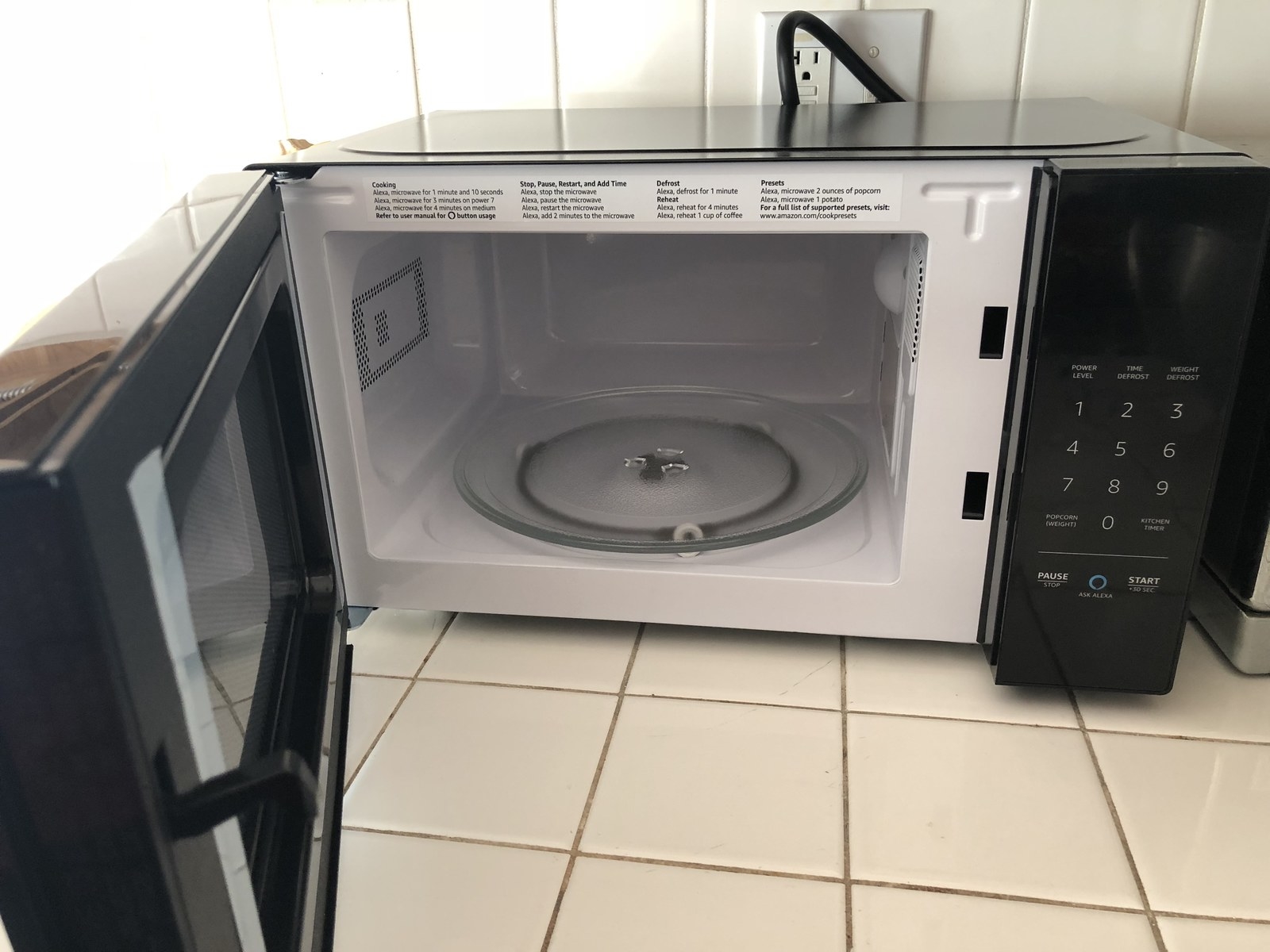
The voice commands, when uttered correctly, worked well. But when I said, “Set the microwave for 30 seconds,” Alexa freaked and didn’t know what to do. (The correct command language is “microwave,” “reheat,” “defrost,” or “add [x] time to the microwave”). Voice control was especially useful when making popcorn. I yelled at the microwave to stop from across the room, when I realized the kernels quit popping.
One of the microwave’s touted features is a dozen preprogrammed “quick-cook presets,” for not just reheating but cooking food like corn on the cob and hot dogs. In the age of fresh, organic everything (hello, Amazon-owned Whole Foods), it’s kind of endearing that the 1970s utopian vision of steaming vegetables and defrosting meat in minutes is BACK.
The presets aren't exactly time-saving: Amazon requires you to specify the number of ounces of food for precision. Unless you’re following a calorie-restrictive diet, it’s unlikely you’ll know the exact weight of casserole you’re reheating. Coincidentally, there’s an Amazon solution to the problem: a $15 kitchen scale, available with two-day shipping.
I also found that the presets almost always underestimated the time it took to heat and thaw.
I order flash-frozen sockeye salmon from a dude who spends part of the year fishing in Alaska, because I’m an obnoxious Californian. My heart hurt to sacrifice fish that had traveled so far to be zapped in an Amazon microwave. Still, “frozen salmon fillet” is a “quick cook” preset noted in the voice presets guide and so, for content, I had to verify the claim.
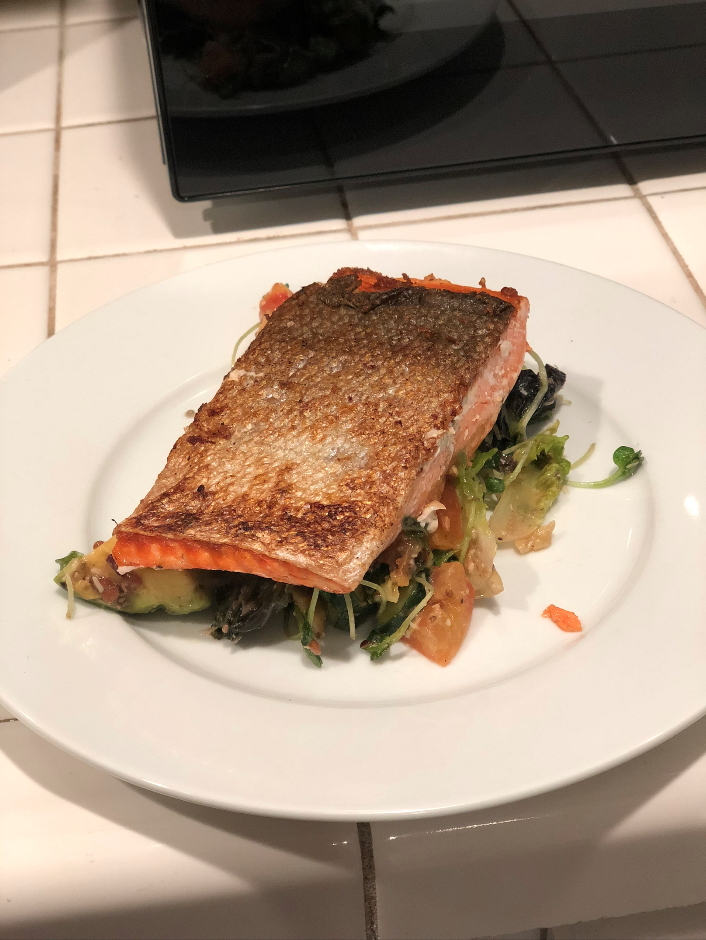
I freed the fillet of its plastic, shut the microwave door, and asked Alexa, politely, to please defrost 6 ounces of salmon. “Fuck, forgot to say ‘fillet,’” I exclaimed in Alexa’s direction.
In any case, Alexa knew what I meant and the microwave started humming. Alexa confirmed that the appliance would work to defrost the salmon for four minutes and 36 seconds. But, when it stopped, I had to add another minute and a half before the salmon no longer had ice crystals hanging off its sides.
I prepared the fish using the cold pan technique, and while the skin was wonderfully crispy, the meat was tough in parts. Confirmed: Microwaves are the worst way to thaw salmon.
Other presets, like “reheat one dinner plate,” and “reheat one cup of coffee,” fared similarly. The leftovers didn’t come out piping hot, and the coffee wasn’t steaming. I think you’re better off using your own microwave heating intuition than Amazon’s presets. “As with all microwaves, quick-cook voice preset performance depends on a number of factors and may vary. The AmazonBasics Microwave offers similar cooking capabilities like other microwaves in its class,” said an Amazon spokesperson.
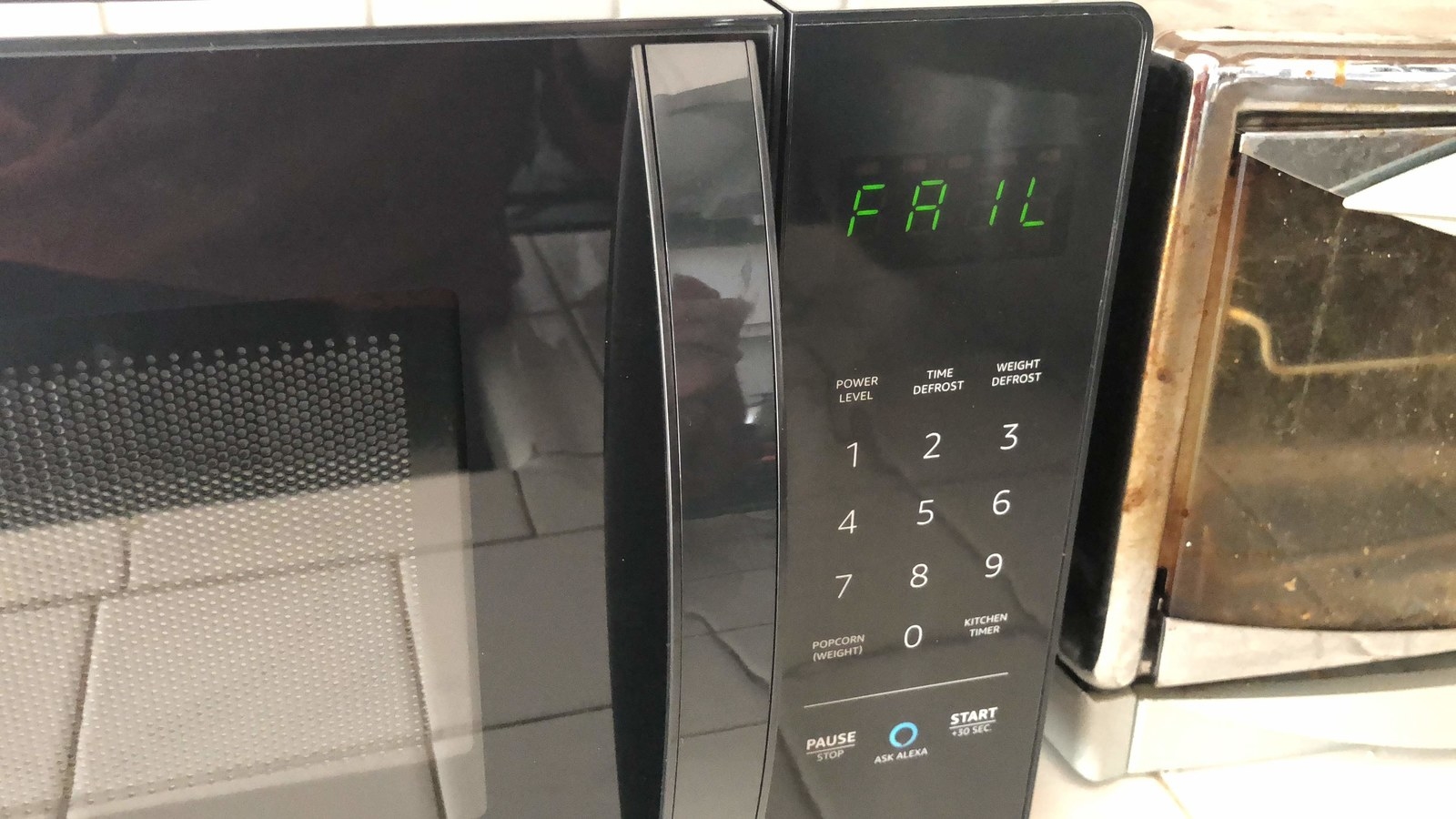
The microwave’s tiny technological wonders do make up for its struggles when defrosting salmon. Because it’s connected to Wi-Fi, the time is set and updated automatically. Installing the microwave was stupid easy, too. Because I’ve connected an Amazon device to my Wi-Fi network before, I didn’t have to re-input my credentials. An Echo in my apartment immediately recognized the microwave, prompting me to open the Alexa app.
There’s also an “Amazon Dash Replenishment” integration for automatically reordering popcorn. You set your preferred brand in the Alexa app, and the microwave will count how many popcorn bags you’ve popped. Just before you run out, it’ll order you a new one. But I’m not sure it’s very useful: There are only a dozen brands to choose from (in the US, at least), and the microwave popcorn industry is in sharp decline, as consumers opt for pre-popped, ready-to-eat popcorn snacks instead.
The best feature of the microwave is its price, $60. It’s sold under the accessible AmazonBasics label, the company’s in-house brand that takes data from its own platform (like the best-selling microwave size at the best-selling price point) to determine which products to manufacture and sell, often at significantly lower prices, which, the platform's third-party sellers claim, squeezes out the competition that provided that data in the first place.
Unless your microwave is older than nine years, you probably don’t need a new one. Plus, with the surge in popularity of appliances like the Instant Pot pressure cooker, Crock-Pots, and air fryers, there may not be room for electromagnetic radiation on your kitchen countertop. But if you do need a new microwave, and decide one with Alexa is right for you, you will be making your life very incrementally better via voice control. Without Alexa, the microwave works as well every other normal, affordable microwave.
The Amazon microwave isn’t exactly the smarthome future I was hoping for. There are self-driving fridges that deliver cold beer when beckoned and ovens with cameras that can identify what you’re cooking (though it should be noted that the former is still a prototype and the latter is nearly $600). Compared to those devices, the AmazonBasics microwave is relatively unsophisticated. But the most compelling thing about this chatty kitchen appliance is what it can do for what it costs: marginally improve my life, one saved beep at a time.
The AmazonBasics Microwave with Alexa is available only in the US at launch. It’s $60 and starts shipping today.
